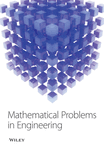Modeling and Simulation in Transportation Engineering 2014
Theoretical investigation and empirical work trigger the industry development and vice versa. In transportation engineering, a proliferation of researches related to each essential element of transportation systems prompt the evolutions at different levels of transportation science and technique. Researchers have been pursuing a safe, intelligent, green transportation system and solving the current problems worldwide. All actions are based on a continuous analysis of revealing a variety of static and dynamic transportation phenomena.
Modeling and simulation are well-established methods for understanding, characterizing, and predicting the aforesaid phenomena (microscopic, mesoscopic, and macroscopic). Modeling addresses how something behaves in an abstractive way. And simulation is an alternative representation as well as a tool set in experimental testing, training, and decision making. This research field has been involved in mathematical, physical, and psychological science and moves forward to an interdisciplinary combination. Nowadays, the studies on mathematical modeling and computational simulation in transportation engineering have significant contributions to the development of green intelligent transportation and safety.
Considering the interaction between traffic user activities and the traffic environment, more efforts need to be made by balancing the human factor and nature ecology. Meanwhile, with the booming travel demand in metropolitan areas, reduction of the traffic congestion should be highly emphasized. Transportation modeling and simulation application integrated with new technologies can be regarded as the foundation work for seeking the solutions to a better sustainable mobility.
The special issue gives an overview of the sophisticated traffic models and discusses an in-depth study of innovative methodologies in modeling and simulation of transportation operations. The proposed novel models and simulators in traffic flow, road user behavior, vehicle safety performance, public transit analysis, transportation policy, and construct measures can be widely applied in transportation planning, design, optimization, operation, and management.
You will be able to find out the advances in modeling and simulation of transportation system. Herewith the main topics of the special issue include the following: intelligent transportation system (ITS), logistics and transportation management, transit and rail systems operation, traffic flow and transportation model, mathematical optimization in traffic engineering, traffic safety and emergence response, renewable energy sources in transportation, transport planning and road traffic, vehicle active safety and intelligent vehicle, and driving behavior and driver assistance system.
Wuhong WangGeert WetsHeiner BubbHuimin NiuHong Chen




